Bulging discs are a common cause of backache for millions of people all over the world. The discomfort and limitation to mobility due to bulging discs make even the simplest tasks a serious chore. A bulging disc occurs when the soft disc between the vertebrae bulges out beyond its normal border and presses on nearby nerves. This results in pain, numbness, and muscle weakness in the back, neck, arms, or legs. Although the degree of pain varies, it is often bad enough to hinder daily life activities.
Traditional treatments for bulging discs include medications, physical therapy, and surgical intervention. While these treatments are effective in providing temporary relief, they pose risks and require a long recovery period. In the quest for gentler and more effective solutions, many people are turning to alternative therapies.
One such intervention, red light therapy, is gaining traction due to its possible benefits in pain relief, swelling reduction, and healing acceleration. But how is it made, and does it really work in the case of pain caused by bulging discs? Let’s take a closer look at this emerging treatment and its potential impact on spinal health.

Science Behind Red Light Therapy
Red Light therapy is an innovative technology that has been used for different types of diseases, including pain management for musculoskeletal problems like bulging discs. RLT uses specific wavelengths of red and near-infrared light that can penetrate the skin and deeper tissues to stimulate cellular processes, promoting healing.
The science behind RLT is simple: at the cellular level of the human body, our cells absorb light energy derived from specific red and near-infrared wavelengths. The absorbed energy then amplifies the body's natural processes of repair and reproduction. Red light therapy typically operates within the range of 630-850 nanometers. These wavelengths are deep enough to penetrate tissues effectively into a bulging disc and provide relief without invasive procedures or medications.
Can Red Light Therapy Really Help with Bulging Disc Pain?
Yes, red light treatment can alleviate pain in a bulging disc condition. Targeting the root causes, RLT offers multiple advantages, such as inflammation, tissue repair, and muscle relaxation.
Reducing Inflammation
One of the major contributors to disc bulge pain is inflammation. Sometimes, the bulged or herniated part of a disk presses against an adjacent nerve, irritating and swelling the tissues around it. The pain can be intensified by inflammation, further worsening the situation for the patient. Several research findings have indicated that RLT can reduce the levels of such cytokines, including tumor necrosis factor-alpha and interleukin-1 beta, while increasing the release of anti-inflammatory cytokines, such as interleukin-10. Red light therapy may help diminish this inflammation by initiating a biological response that downregulates pro-inflammatory cytokines.
Promoting Healing
Besides reducing inflammation, red light therapy can also stimulate the body's natural healing process. On the cellular level, red and near-infrared light increases the amount of adenosine triphosphate produced, a molecule in cells responsible for energy production. Increased cellular energy allows cells to function properly and perform tasks such as the repair and regeneration of tissues. For a person with a bulging disc, this may lead to faster restoration of the injured tissue, reduce pain, and improve function.
Easing Muscle Spasms
Muscle spasm is another very common side effect of a bulging disc, which might arise from the body's muscles tensing up because of pain and irritation caused by the disc. These can further give rise to discomfort and stiffness, consequently restricting mobility. Red light therapy may help relax such muscles by improving blood flow into the area and reducing muscle tension. As muscles relax, patients often experience a decrease in pain and improved mobility.

What to Expect from Red Light Therapy?
Gradual Pain Relief: Red light therapy cannot instantly fix bulging disc pain, but after its consistent application, the pain gradually fades away. Its ability to stop inflammation and relax muscle tension leads to obvious improvements after several sessions.
Improved Mobility: With decreased pain and inflammation, range of motion and flexibility noticeably improve. RLT targets the underlying factors such as inflammation, infection, or displacement of a joint, allowing the patient to regain mobility and perform daily life activities with ease.
Precautions and Effective Use of Red Light Therapy
When considering red light therapy application for a bulging disc pain condition, one must consult a healthcare provider to determine if the RLT treatment is a good fit for their particular condition. Though red light therapy is safe, some rare side effects could be skin irritation and redness. In case of any adverse effects, stop using RLT and consult your healthcare professional.
It is crucial to use a good-quality device from a reputable manufacturer that emits wavelengths between 630 and 850 nm for maximum effectiveness. For getting effective outcomes, consistent sessions done for 20-40 minutes every day are better than doing irregular sessions.
It is also important to know that therapy red light alone is not sufficient for healing bulging disc pain. Red light therapy can be used as an adjunct to physical therapy and medications to enhance its effectiveness.
Is Red Light Therapy Safe?
Yes, red light therapy has been found to be non-invasive and safe. It doesn't involve medication or surgery. It also does not pose many of the side effects that may come with traditional pain relief methods. RLT does not produce heat either and cannot burn or damage the skin.
Like any other treatment, one should consult first with a doctor first before undergoing red light therapy, especially if underlying disorders exist. Furthermore, though RLT is generally safe for most people, one must use a device from a reputable company in order to make sure that proper wavelength and dosage are met for the effectiveness of the treatment.
Red Light Therapy: A Potential Pathway to Bulging Disc Pain Relief
If you're living with the pain and discomfort of a bulging disc, red light therapy may be worth considering as part of your treatment strategy. This non-invasive approach uses light free of pharmaceuticals to potentially reduce inflammation, accelerate healing, and lessen pain. Whether you're looking to supplement physical therapy sessions or seeking an alternative solution to medications, consistent use of red light therapy devices may lead to gradual pain relief, improved mobility, and an overall better quality of life.
References
- Glass G. E. (2021). Photobiomodulation: The Clinical Applications of Low-Level Light Therapy. Aesthetic Surgery Journal, 41(6), 723–738. https://doi.org/10.1093/asj/sjab025
- Hu, D., Zhu, S., & Potas, J. R. (2016). Red LED photobiomodulation reduces pain hypersensitivity and improves sensorimotor function following mild T10 hemicontusion spinal cord injury. Journal of Neuroinflammation, 13(1), 200. https://doi.org/10.1186/s12974-016-0679-3
- DE Oliveira, M. F., Johnson, D. S., Demchak, T., Tomazoni, S. S., & Leal-Junior, E. C. (2022). Low-intensity LASER and LED (photobiomodulation therapy) for pain control of the most common musculoskeletal conditions. European journal of physical and rehabilitation medicine, 58(2), 282–289. https://pubmed.ncbi.nlm.nih.gov/34913330/













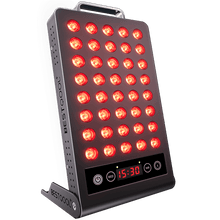
 Small
Small
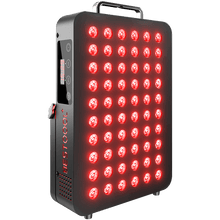
 Moderate
Moderate
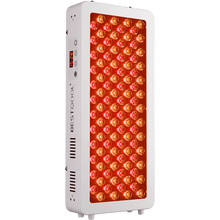
 Moderate
Moderate
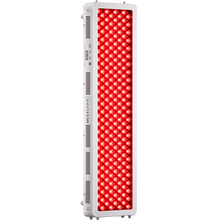
 Moderate
Moderate
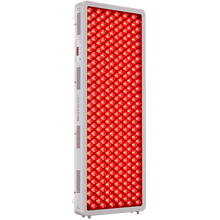
 Full
Full



